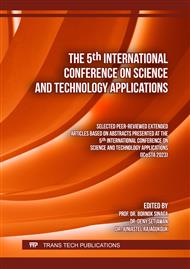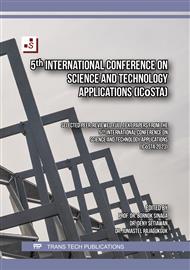p.3
p.11
p.19
p.27
p.39
p.47
p.55
p.65
Review of the Physical Properties of CLC Lightweight Concrete Using the Addition of Red Sand from Labuhan Batu Selatan
Abstract:
This research aims to review the physical properties of Lightweight Cellular Concrete (CLC) bricks with the addition of Labuhan Batu Selatan red sand. CLC bricks have the advantage of being lightweight and larger in size, which can expedite the construction process. CLC bricks are made by adding air bubbles/foaming agents to the mortar mix as an expander to produce lightweight bricks with a lower material composition. It is crucial for the air bubbles to maintain their shape during the mortar curing process without causing any chemical reactions. In this study, lightweight bricks were made by experimenting with various combinations of red sand and river sand, with variations of 0% red sand and 100% red sand, using the Cellular Lightweight Concrete (CLC) method. The research method employed was experimental, testing the physical properties of CLC lightweight bricks, specifically density and compressive strength, in accordance with the SNI 03-6825-2002 standard. As a result, with the addition of red sand in the production of CLC lightweight bricks, the density falls within the lightweight brick category, but it does not significantly improve the compressive strength of the lightweight bricks. This is because the CaCO3 (calcium carbonate) content in the CLC lightweight brick mix has the highest intensity, causing the bricks to become brittle. Therefore, this research suggests paying more attention to the mixing and blending processes of the materials to achieve a more uniform distribution.
Info:
Periodical:
Pages:
19-24
Citation:
Online since:
February 2024
Keywords:
Price:
Сopyright:
© 2024 Trans Tech Publications Ltd. All Rights Reserved
Share:
Citation:



